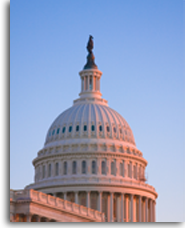This item by J.P. Green was originally published on April 24, 2012.
Alternet’s ace Sarah Jaffe has an informative post, “Labor Unions’ Fight for the 99% Goes Way Beyond Raising Campaign Dollars,” which puts organized labor’s political role in clear perspective. I’ll just share a few graphs and urge everyone to take a few minutes and read the whole thing. Jaffe provides an historical overview and sets the stage:
You’d think people would have learned the lesson in 2011: labor is an integral part of the progressive coalition, one of the only forces capable of acting as a counterweight to the organized money that’s taken over our politics.
Yet as election season wears on, many politicians and reporters seem to have forgotten. From Wisconsin, where the former mayor of Madison claimed that candidates shouldn’t be “beholden to big unions,” to the Web, where debates over union endorsements seem to focus only on how much money labor will spend to support its chosen candidates.
Republicans whine about union money in politics. But that’s not thier greatest concern, as Jaffe points out:
“The labor movement has always given money to candidates,” Damon Silvers, policy director and general counsel at the AFL-CIO, told AlterNet. But when it comes down to winning elections, their greatest contribution is boots on the ground. “And not just any boots, but people who are plugged into their communities, who are trusted. They’re the backbone of America’s civic culture, the people who are the poll watchers, the people who volunteer at food banks, local leaders in unions, the shop stewards, the people who pound the pavement. They are the core of civil society in the United States.”
…Most of those little victories — those 4 percent raises and new contracts with health care benefits — are won day by day, inch by inch, in grinding organizing campaigns and lengthy negotiations with management. They don’t make headlines the way a multimillion-dollar ad buy does. As Perlman pointed out, unions are workers’ organizations that do politics, not political organizations. But with only 11.8 percent of Americans represented by a union, the political action unions do has become the public face of labor.
As for the real extent of union financial contributions to candidates, Jaffe notes:
“CNN’s Charles Riley calculates that for 2011-2012 the 100 biggest individual donors to super PACs make up only 3.7 percent of the contributors but supply more than 80 percent of the cash,” Noah noted.
Even as the AFL-CIO launches its own super PAC, Worker’s Voice, the difference is obvious. Eliza Newlin Carney at Roll Call reported that the AFL-CIO’s PAC has raised some $5.4 million and will report $4.1 million cash on hand when it has to file first-quarter disclosure reports. Compare that to the $76.8 million raised by Karl Rove’s Crossroads GPS–which got 87 percent of its cash from just 24 donations from ultra-rich donors who gave over $1 million apiece. American Crossroads, the super PAC arm of Crossroads GPS, has already spent $29 million since its founding in 2010.
…Even with the super PAC, organized labor’s monetary contribution to the election is going to look small compared to big business. AFL-CIO political director Michael Podhorzer told Roll Call, “We were outspent 20-to-1 last time. We will probably be outspent 20-to-1 this time. But we are going to out-organize them by more than 20-to-1.”
…The labor movement is built upon grassroots organizing. Organizing workers takes conversations, face-to-face, personal connections, and solidarity. That’s why the most important contribution from labor even in today’s big-money era is going to be, as Perlman said, “actually talking to people, explaining the issues in a real way, not in a 30-second ad way.”
As Jaffe concludes, “…Really, the most important question shouldn’t be whether labor will spend a lot of money on TV ads. The question instead, for smart political watchers, will be whether the volunteers, who do the grunt work of campaigning, the door-knocking and phone-banking and stamp-licking, will show up…”



